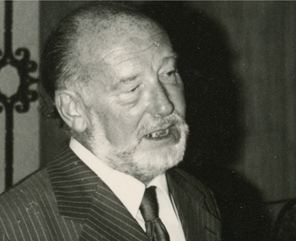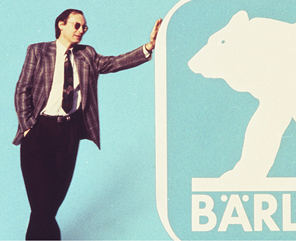1823: Baerlocher is the first Bavarian sulphuric acid factory. The 123 years before the Rosenthal era are marked by rapid change in the chemical industry, but also by numerous changes of ownership. What remains is the name "Baerlocher" and the Munich location.
In 1823, Dr Johann Gottfried Dingler ventures into something extraordinary in the Bavarian city of Augsburg. The chemist gathers an illustrious group of other chemists, cotton manufacturers, merchants and politicians around him. Together they build the first sulphuric acid factory in Bavaria, the cradle of Baerlocher. Sulphuric acid is needed for the production of chlorine and soda as well as for the bleaching of textiles. In the agricultural Kingdom of Bavaria, it is an imported commodity until 1823. Dingler and his companions therefore sense an opportunity and are granted a royal monopoly on the production of sulphuric acid. The factory is highly profitable and soon even exports to other European countries.
But already in 1828, the comfortable monopoly position is gone. New products are needed when the founders later sell the factory. Under the new owners, Glauber's salt, nitric acid and bone glue leather are produced, but also phosphorus, wood acid and burnt ivory, e.g. for glaziers and textile production. The sale of the company to the Swiss chemist Otto Bärlocher in 1864 has far-reaching consequences. He actually wants to return home but dies in 1880 at the age of only 50. His legacy is the new name "Chemische Werke Otto Bärlocher". While his name remains, the ownership carousel continues to spin. The product range also becomes more diverse. Now a new type of artificial fertiliser is also produced, for which there is great demand.
The journey to Munich
In 1903, the chemist Dr Anselm Kahn and the engineer Franz Wittmann take over. The workers employed at the "Chemische Werke Otto Bärlocher" now also produce ironing coals and washing powder - B2C business from today's perspective. In 1909, Kahn and Wittmann also join the newly founded "Chemische Werke München GmbH", which uses waste products from a gas plant for the production of artificial fertilizers. Two years later, the company merges into "Chemische Werke München - Otto Bärlocher". Fourteen years later, the company finally leaves Augsburg. Moosach is already the headquarters at this point.
Troubled times
During the First World War, the "Chemische Werke München - Otto Bärlocher" produces Chile saltpeter for ammunition and explosives. The economic situation is tense. Even the end of the war does little to change this. Dr. Anselm Kahn reacts by offering relatives a share in the companies and finally holds the majority with his family in 1927. Franz Wittmann leaves the company in 1925. At the beginning of the 1930s, things seem to be improving again.
But the National Socialists' seizure of power in 1933 changes everything. Soon the "Chemische Werke" are targeted by racial ideological persecution. Jewish citizens are gradually and systematically ousted from economic life. Anselm and his son Fritz Kahn are forced to resign from the management in 1938 in favor of Franz Wittmann, who returns to the top of the company. By June 1938, the Kahns and other Jewish shareholders have to cede their shares to Wittmann and his brother Hugo. During the Second World War, Wittmann switches production to shoe polish, bath salts and scouring powder. This is not particularly profitable. He is successful with a lighting compound for coal. From November 1944 to April 1945, forced laborer’s also work in the factory – an estimated several dozen people. For the later owner family Rosenthal, it is a matter of course that Baerlocher participates in the compensation of former forced laborers by German industry through the Foundation Remembrance, Responsibility and Future (EVZ).
1946: New beginning under Dr Christian Rosenthal
After the end of the war, the US military government tries to denazify the German economy. The "Chemische Werke" fall under state administration. A trustee must be found. It is Dr Christian Rosenthal. Initially intended as an interim solution, the first of what would become 77 years of Baerlocher's "Rosenthal era" begins with him in 1946. He turns out to be the perfect match for the abandoned chemical factory, which was already 123 years old at the time.
Fate of the Kahn
Dr Anselm Kahn maneuvers the "Chemische Werke München - Otto Bärlocher" safely through the First World War and the economically challenging times of the Weimar Republic. Under the Nazi-Regime, he and his family experience expropriation, exile, suffering and death. After being forced out of the company, Anselm's son Dr Fritz Kahn emigrates to the USA in 1938. Dr Anselm Kahn also manages to escape across the Atlantic. His brother Ernst emigrates to Tel Aviv.
However, not all of the Jewish associates are able to rescue themselves. Arthur Arnold is killed in the Dachau concentration camp, Benno Arnold and his wife Luise are murdered in the Theresienstadt concentration camp. In 1948, Dr. Anselm and Fritz Kahn, as well as many other former Jewish partners, apply for restitution. The Wittmann brothers, however, demand compensation. A lengthy back and forth between the lawyers ensues. It is not until February 1951 that an agreement is reached. The Wittmann brothers return the shares they took over at the time as well as half of the profits that have accrued in the meantime in the form of business shares. The tragic fate of the Kahn family, however, reminds us of the Nazi terror until today.











